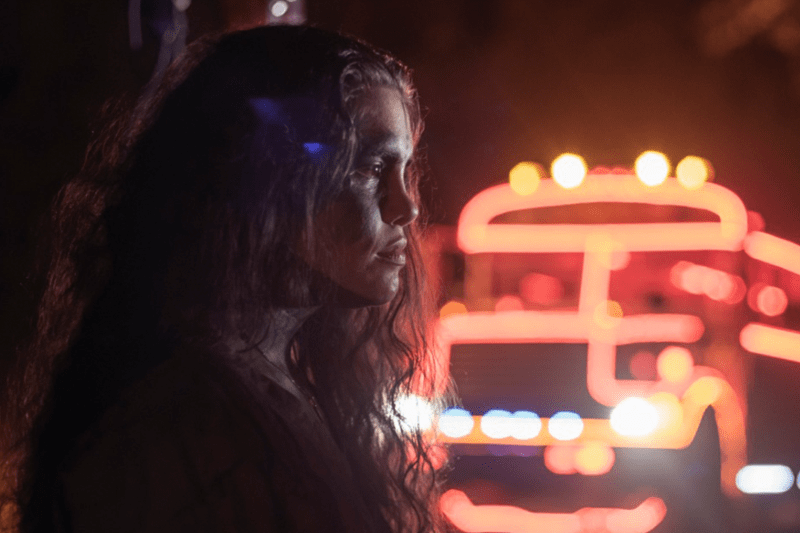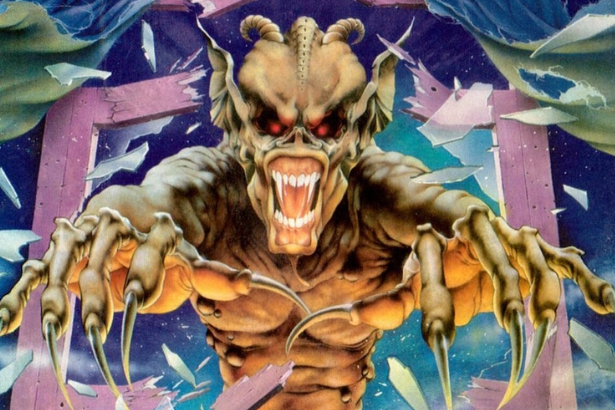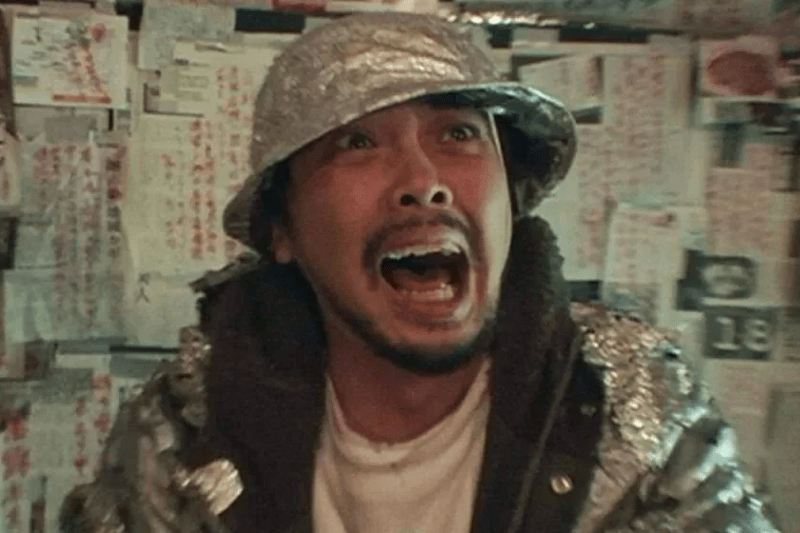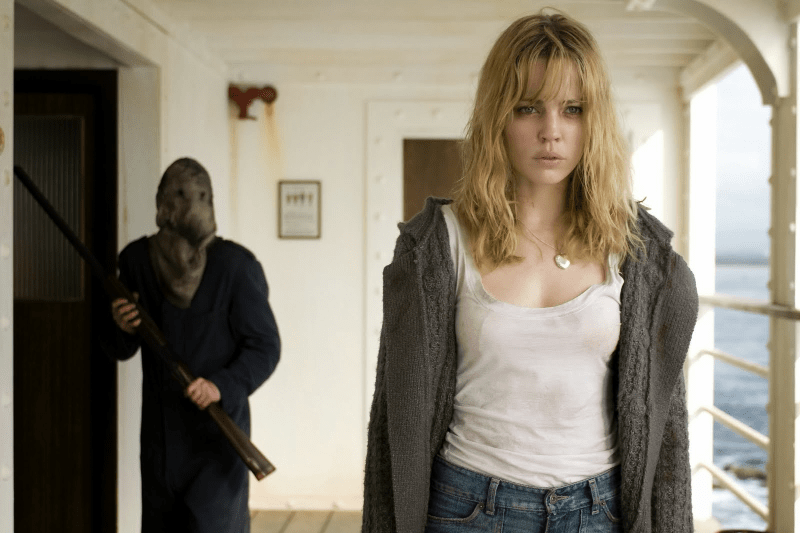When I think of Latin American countries and horror films, the first that come to mind are Mexico and Argentina—but there are plenty of great horror titles coming out of South and Central America. Panama is one of the few regions that hasn’t produced a horror film until recently, as international filmmakers continue to expand horror’s reach. Directors J. Oskura Najera and Sol Moreno brought it upon themselves to release Diablo Rojo PTY in 2019, Panama’s first official horror film.
As a directing duo, Najera and Moreno follow the footsteps of Cuba’s first horror film, Alejandro Brugues’ Juan of the Dead. Neither of these films try to reinvent the horror genre. Instead, they use genre tropes to speak about their country as well as giving nods to past horror films. Juan of the Dead uses zombies as a metaphor to celebrate Cubans and their survival instincts. Diablo Rojo PTY uses creature feature familiarity to speak to modernization and the fight to keep folklore alive in a changing world.
Diablo Rojo Origins
Panama is considered one of the most diverse countries in Central America, and on paper, this results in diverse folklore—but as Central America works its way into a developed territory, people begin to search for modern things. Sometimes this means losing a piece of culture. In Panama’s case, it’s the termination of the Diablo Rojos in exchange for newer and safer public transportation.
Diablo Rojo PTY drips in folklore as witches, cannibals, and monsters fill the screen. The film follows two Diablo Rojo drivers and Panamanian locals: Miguel Moreno (Carlos Carrasco) and Junito El Pavo (Julian Urriola). Within the first ten minutes of the film, we encounter the second piece of culture and folklore: the Witches. As the film progresses and the Diablo Rojo drivers clash with these witches, threats force a battle of survival in the Chiriqui jungle.
Prior to watching Najera and Moreno’s film, I had never heard of a “Diablo Rojo.” They’re a unique type of public transportation service. Diablo Rojos are decommissioned public school buses that are transformed by the entrepreneur’s taste. Each bus is painted and decorated with extravagant flair—only these buses don’t follow regulated driving rules. Diablo Rojos are known for being dangerous, but they’re a significant part of Panamanian culture.
Drivers sourced local artists to paint their signature looks. It became the spark of a folk art movement; other painters began adding their own spins to all of these refurbished United States school buses. But as the death rate rose due to reckless drivers, Diablo Rojos were outlawed then decommissioned. Just like folklore stories, the culture of Panama fights through as it conflicts with the attempts of modernization.
Writers Najera and Adair Dominguez clue us into the clash between traditional culture and modern society within minutes. After some gorgeous cinematic shots of Panama, we see the public reaction to Diablo Rojos through the media. The first piece of dialogue in the film is spoken through interviews. “Take away those Diablo Rojo driver’s licenses.” “They’re devils.” With the banning of Diablo Rojos in Panama, Najera and Moreno bring these stylistic devil buses to the forefront of the screen. The bus itself turns into an important character in the film. It’s where humans find shelter when attacked by Panama’s old tales.
Not Without My Witch
At the ten-minute mark, the witches cast a spell and the Diablo Rojo (with Miguel and Julian onboard) enters it unknowingly. We meet two more characters that are important to the narrative: Officer Winnie Pinilla (Blas Valois) and Teo Carrington (Renan Fernandez). During their introduction, we get a teaser of the main cultural monster called La Tulevieja as Sol Moreno interjects feminist themes throughout the narrative.
Not only do we get to see the culture push back, but this is done entirely by women. We get to witness them as cultural icons, folktale characters, and indigenous people. The women fight back against the men who hold authority in modern society: cops and priests. The men who hurt them throughout the years. The suffering begins with Officer Carrington. As the practical gore escalates, the conflict intensifies.
As the witches attack the group of men, one by one they begin to drop like flies. Regardless of the minimal repetition, each scene brings a new flavor of the witch’s lore—and this doesn't even include the added zest of sacrificed babies.
Before long, another new character is introduced: Padre Andres (Leo Wiznitzer). This time the jungle scenery is exchanged for the walls of a church. During a scene of exposition, the witches attack once again. Heavy imagery overtakes the screen similar to a climactic meltdown in Jose Lopez Moctezuma’s Alucarda. All the men escape unscathed but that’s not the vision Moreno was after.
Instead, Diablo Rojo PTY attacks organized religion. The witches burn down the sacred building. During this, Sol Moreno takes her time with a shot of the burning cross and the Panama flag. This lingering imagery focuses on the destruction of religious institutions and national ideals. The traditional culture conflicts with the present as the country reaches a more progressive state.
Meeting 'La Tulivieja'
At the film’s midpoint, we get the backstory of one of the most famous folklore stories in Panama. In Mexico, the folktale is known as “La Llorona.” To Panama, the monster behind the tale is “La Tulivieja.” The general premise of a ghostly woman crying for her babies near a river is the same but the description greatly varies. Some of La Tulivieja’s reoccurring descriptors include bat wings, long hair protruding through the skin with gaping holes and sometimes her breast will be swollen and leaking depending on the region.
Josephina (Alejandra Araúz), who has only appeared as a painting on the back of Miguel’s Diablo Rojo, magically wanders out of the woods. It isn’t long before the beautiful Josephina transforms into the horrific Tulivieja out of rage because of what traumas she once endured. La Tulivieja is hideous in all the right ways. The director duo pours their love of 80's creatures and practical effects into an accomplished nightmarish creation.
A stand-out aspect of the film is the gore and Tulivieja's design. Once in the monster state, she pursues an act of revenge. La Tulivieja’s target is Miguel, who impregnated Josephina and left to the modern city as she stays back in a rural pueblo leading to her suicide. But now it's time for the traditional folklore to come to life and fight against the modernized deceiving man.
This ordeal turns into an oozing, bloody mess. La Tulevieja avenges herself by killing Miguel. The witches slaughter the priest near a river, only the priest is able to bless the water and turn the witches into a disintegrated pulp. Our last survivor is Junito, the youngest in the group, which can be seen as the new generation of Panama.
As he drives the Diablo Rojo out of the jungle, a witch’s grave appears in the back of the bus. In a jump scare akin to Brian De Palma’s Carrie, an arm bursts out of the grave. A supernatural force takes over the wheel. Both the new generation of man and traditional culture intermingle as the Diablo Rojo drives into the capital city of Panama, emblemizing a country’s culture no matter how fast anyone tries to speed away from their past.
Conclusion
Culture and folklore are crucial as they are interwoven within a country’s pride. It’s what makes a country unique to the neighboring lands and to the rest of the world. As modernization begins to overtake Latin America, emerging filmmakers like Najera and Moreno have turned to horror to make their statement. In this always-changing world, it’s difficult to keep up with new ideas while sticking to old traditions. Diablo Rojo PTY embodies the collision of the past, present, and future of Panama in one bloody package.







